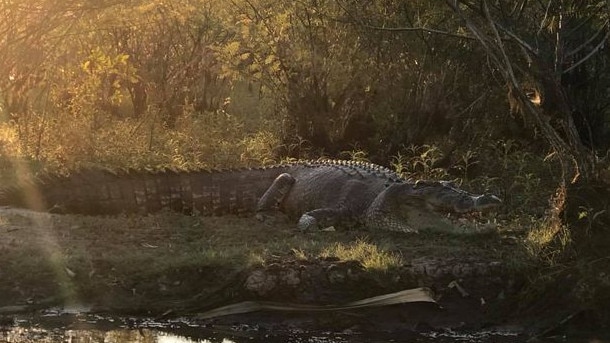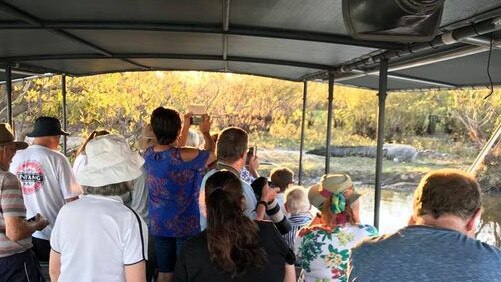Corroboree Crusher: Meet elusive 6m saltie Grandpa, who rivals the Top End’s biggest crocs
ADELAIDE River may be known for its large jumping crocodiles but there’s a new big lizard in the Top End giving them a run for the title of top croc.
Pets and Wildlife
Don't miss out on the headlines from Pets and Wildlife. Followed categories will be added to My News.
ADELAIDE River may be known for its large jumping crocodiles but there’s a new big lizard in the Top End giving them a run for the title of top croc.
Grandpa, an elusive saltwater croc with a busted-up nose, lives on Corroboree Billabong and is thought to be a whopping 6m-long beast.
The photo, snapped last year by Lynda Shappert, snapped the monster croc relaxing on a muddy bank with his jaw slightly ajar.
She said she only saw Grandpa once a year – usually in late July or August and always on the same river bank.

MORE TOP CROC NEWS
What a stickhead! Dumb tourist tries to lure killer crocs at notorious Cahills Crossing
Nearly 60 baby crocs stolen from NT wildlife park in mystery theft
“He’s just so big,” she said.
“I’ve worked with crocs on the Adelaide River and we had one called Hannibal and this fella would rival the size of Hannibal.
“Hannibal was a big black crocodile from the spectacular area – his nose was as big as a dinner plate.
“This guy has to be close to that, he’s just too big.”

The Corroboree Park Tavern co-owner said she’d spotted the croc once a year over the past four years, but due to coronavirus this year had not had the chance to lead a tour out on the billabong in search of it.
“Being such a big croc, he has to be 80 years or more and to be in such good nick – he’s a survivor,” she said.
Ms Shappert said whenever she ran into the rarely seen saltie it would calmly sit there – unfazed by the boat load of tourists a couple of meters away furiously clicking their cameras at the sight.
LIMITED TIME: New NT News subscription offer: $1 a week for the first 12 weeks
While the croc looks good, Ms Shappert said Grandpa was missing the tip of his snout, with its bottom teeth protruding over its top jaw.
“He’s quite clean still and must be getting in and out to the saltwater,” Ms Shappert said.


